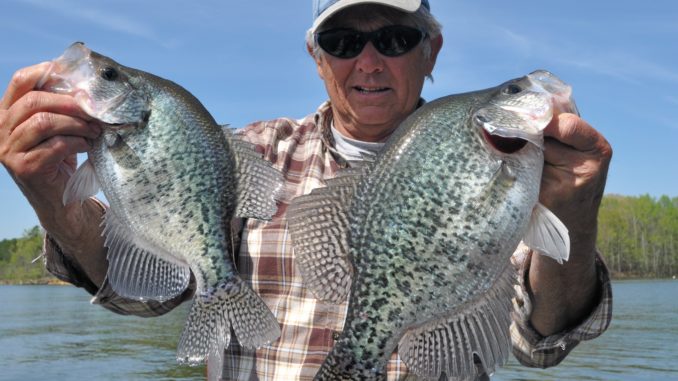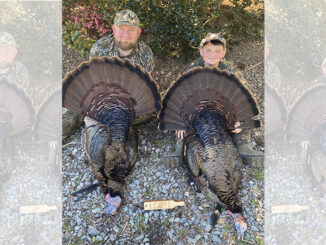
April is crappie-fishing time at many large North Carolina reservoirs and 49,500-acre John H. Kerr Reservoir on the N.C.-Virginia border produces some of the biggest slabs in the state.
Guide Bud Haynes of Clarksville, Va., a retired lure-maker and current crappie guide, knows where to catch slabs that range from 2 to 4 pounds at Kerr Lake each spring.
Although he mostly fishes in creeks north of his hometown, “crappie can be found in most of the creeks at Buggs Island,” he said. “They’ll be staging in semi-deep water or they’ll be in shallow water. But the fish on deep structure are often big females, waiting to move shallow to spawn.”
Haynes is one of several Kerr Lake anglers who regularly compete in Saturday crappie tournaments based out of Bobcat’s Store on N.C. 15 just south of Clarksville.
“A lot of those guys are trolling the creeks with spider rigs right now,” he said.
Spider-rig fishing actually describes the way a boat looks (like a huge water spider) because anglers will place six to eight long rods (held by rod holders) on the bow and fish the same number off the stern. They use trolling motors to barely move across sections of creeks holding fish suspended over deep water.
Some spider-rig anglers use live minnows, while others use tiny 1/16-ounce jigs tipped with minnows. Others prefer only jigs.
Haynes uses another technique to fish what he calls “trash” for lunker crappie. But his trash (sunken trees) is actually treasure.
“A lot of the creeks have sunken Christmas trees that hold big crappie this time of year,” he said.
The main requirement to fish “trash” is a depth-finder, otherwise it can’t be done successfully. Haynes has more than 400 “trash” pile locations loaded into his depth-finder’s GPS, but anglers without GPS-marked honeyholes can cruise the edges of creeks in 17- to 20- foot water and watch their fish-finders to see trees rising up from the bottom.
“I watch the LCD on my depth-finder to watch for trash and fish,” said Haynes (434-374-0348).
Once he finds a tree with fish suspended in and around it, Haynes backs off to casting distance and uses a spinning rod to throw his self-made 1/16-ounce crappie jigs directly on top of the tree.
“You count down, 1, 2, 3, etc., until your jig reaches the top of the tree,” he said.
For each count, a jig will fall a foot.
“Keep your line tight because sometimes crappie will hit a jig on the fall,” Haynes said. “Then you just slowly reel it back to you.
“A strike will feel like a ‘tick’ on your line. Then you set the hook quickly but not too hard because you can pull a hole in a crappie’s mouth, which is very soft.”
Haynes’ jigs vary in color, but his favorite is citrus, which is mostly white with a 1 1/2-inch-long soft plastic tail. His jigs are a smaller version of the Helgrammite lures he makes for smallmouth fishing on the upper reaches of the James River.
“I don’t sell ’em anymore to fishing tackle shops like I used to, but I’ll take a few bags on the boat each trip I make with clients and I’ll sell lures to them, if they want,” he said.
Another favorite April crappie spot is docks. Haynes is an expert at “shooting” crappie jigs underneath boat docks, whose ends often float in 15 or 20 feet of water. He also uses the countdown method once he successfully shoots a jig underneath a dock. Dock crappie almost always hit a jig while it’s falling.
“I’ve caught some big crappie off docks in the creeks north of Clarksville,” he said. “But bigger ones seem to come from trash.”
Haynes’ main complaint is that too many anglers have put trash in the lake and that spreads out the crappie.
“There’s actually too many trees in the lake,” Haynes said. “If we had fewer, the crappie would concentrate on just a few and they’d be easier to catch.”





Be the first to comment